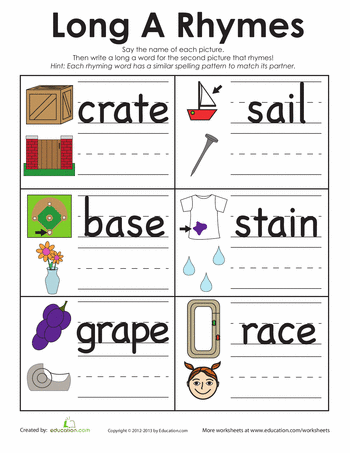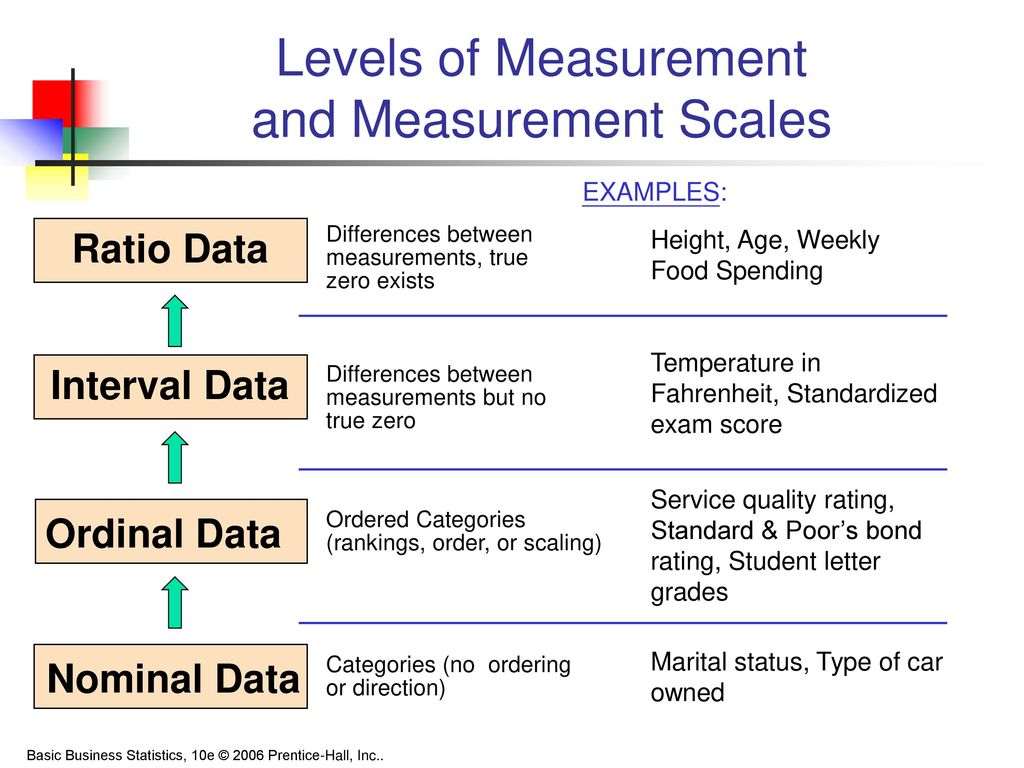Vowels lesson plan
Recognizing Vowels Lesson Plan
Objectives:
- Students will learn how to recognize and remember the vowels as a subset of letters, as distinguished from consonants.
- Students will become familiar with capital and lower-case forms of vowels.
About the Concept:
Recognizing and distinguishing vowels from consonants is an important step in the development of reading and writing skills since all words and all syllables in words contain at least one vowel. Once students recognize the vowels in both capital and lower-case forms, the stage is set for learning rules and spelling patterns for short and long vowels, final vowels, unaccented vowels, diphthongs, digraphs, silent vowels, and irregular spellings. The vowels in written English are
a, e, i, o, u and sometimes y. The letter y is a vowel when it occurs in medial or final position within a word or syllable or when it occurs in initial position in proper names like Yves, Yvonne, and Yvette (pronounced EEV, ee-VON, and ee-VET). (The letter w may also act like a vowel if it follows the letters a, e, or o.) When students have learned to recognize the vowels in Name Those Vowels, they can learn the long and short vowel sounds through the song, Oh, Do You Know? (Sing Your Way Through Phonics, Volume 1). Some other songs that teach students about vowels are the Volume 1 song, Silent E, the Volume 2 Songs, Cool Vowels, The Right Diphthong, and I Before E, and the Volume 3 songs Why Does Y? and Drop It!.
Materials:
- Sing Your Way Through Phonics Volume 1 CD, Tracks 7 and 8 (Listen to audio sample)
- Sing Your Way Through Phonics Volume 1 Mini-Charts (pp. 33-40)
- Plastic letters, letter tiles, or alphabet cards (1 letter per card)
- Optional: newspapers, crayons, highlighter markers, students’s name cards
Note: If you do not have the CD or Mini-Charts, you can still teach this recognizing vowels lesson plan using the folk tune listed on the Name Those Vowels Song Lyrics page. You can create your own mini-charts using the words in bold print letters in each verse of the Song Lyrics.
You can create your own mini-charts using the words in bold print letters in each verse of the Song Lyrics.
Find out more about Sing Your Way Through Phonics products.
Order our cost-saving Volume 1 Combo online.
Procedure:
- Say, “Now that we can recognize our letters, let’s find out about a special group of letters we call vowels.”
- Distribute capital letter cards A, E, I, O, U, and Y to six students, one card per child.
- Tell the class that these are the vowel letters and that every word has at least one vowel letter in it. Ask the class to name the vowel letters on the cards.
- Distribute lower-case letter cards a, e, i, o, u, and y to six other students and ask the students to name these lower-case letters.
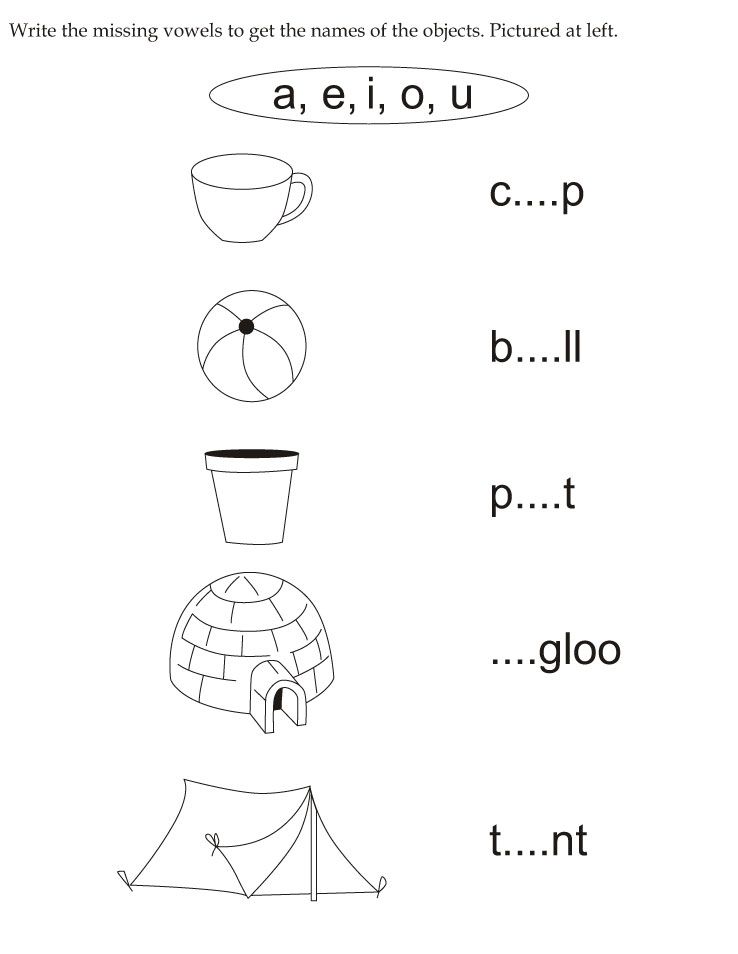
- Ask the students holding the lower-case letters to stand next to their partner letters, forming the pattern Aa, Ee, Ii, Oo, Uu, Yy and ask the students to name this set of vowel letters. (Students should just name the letters without saying “capital” or “lower-case.”
- Set the twelve letter cards on the chalk ledge and call six students to select either a capital or lower-case letter from each set of partners. Ask the six to line up facing the class. (Example: A-e-i -O-U-y) Ask the class to name the set of vowels they see.
- Repeat Step 6 with one or two more groups, forming other combinations of capital and lower-case vowel sets.
- Say, “Now we are going to listen to a song about the vowel letters to help us remember them.
 At first, the singers will name and sing all the vowel letters. Then, you will hear a clap when one of the vowels is left out. See if you can think the names of each vowel that is left out.” Play Sing Your Way Through Phonics Volume 1 CD, Track 7--Name Those Vowels and point to the Mini-Charts on pages 34-40.
At first, the singers will name and sing all the vowel letters. Then, you will hear a clap when one of the vowels is left out. See if you can think the names of each vowel that is left out.” Play Sing Your Way Through Phonics Volume 1 CD, Track 7--Name Those Vowels and point to the Mini-Charts on pages 34-40. - Point to Mini-Chart p. 35. Ask, what vowel was left out? (A)
- Point to Mini-Chart pages 36-39, asking what vowels were left out on each page.
- Say, “What happened at the end of the song?” (All the vowels were sung again.)
- Say, “Now, let’s try singing the song with the CD.”
- Play Track 7 again, pointing to the Mini-Charts and reminding the students to just “think” the names of the left-out vowels in their heads and clap for each vowel they don’t sing.
- Ask students, “What do we call the special set of letters we practiced today?” (vowels) “And what are the vowel letters?” (a, e, i, o, u, and sometimes y)
Follow-up:
- Practice singing Name Those Vowels daily for a few days.
 Then try singing the song without hearing the words, using the instrumental track (Track 8). Allow different students to point to the Mini-Charts words while singing.
Then try singing the song without hearing the words, using the instrumental track (Track 8). Allow different students to point to the Mini-Charts words while singing. - Using the Mini-Chart Templates, vary the order of vowels (Ex: e-o-i-u-a) and mix upper and lower-case (Ex: I-U-a-o-E).
- As a learning center task, have students do letter sorts, separating vowels from consonants. Be sure to include capital and lower-case letters. Use plastic letters, letter cards, or Scrabble tiles.
- Find vowels in books and magazines. Call attention to alternate print forms of the letter a. This might also be a good time to call attention to alternate print forms of the letter g.
Extensions:
- Introduce the Read-and-Sing Book, Name Those Vowels.
 Readers can point to the vowels imbedded in the illustrations while singing this playful song set to the folktune Bingo. Each time a vowel is omitted in the lyrics, singers can substitute a clap, a pencil tap, a knuckle rap, a foot stomp, a rhythm instrument sound, or the word, "Sh!" Keep a few copies of the book at a literacy center equipped with headsets so that students can gain practice in listening, singing, and remembering the names of the vowels.
Readers can point to the vowels imbedded in the illustrations while singing this playful song set to the folktune Bingo. Each time a vowel is omitted in the lyrics, singers can substitute a clap, a pencil tap, a knuckle rap, a foot stomp, a rhythm instrument sound, or the word, "Sh!" Keep a few copies of the book at a literacy center equipped with headsets so that students can gain practice in listening, singing, and remembering the names of the vowels. - In newspapers, circle words with 1 vowel in red, 2 vowels in blue, 3 vowels in green, 4 vowels in orange, 5 vowels in black. Have a timed contest to see who can find the most examples of each. Winners need to read out the vowels in the words they circled to check for accuracy.
- Teach students American Sign Language for the vowels. Have them sign the letters as they sing.
- Play A-E-I-O-You! Each student says these five vowels and points to another student on the word “you.” After everyone has had a turn, everyone says the vowels in unison and all point to the person of their choice on the word “you.
 ”
” - Examine the vowels in students’s names. Have students trace the vowels on their name cards in a contrasting color crayon or highlighter marker. Do this with simple words in students’ sight vocabulary. (Ex: stop, walk, exit, baby)
- Compare objects and animals in alphabet books for the vowel letters. For example, one book might display an apple for the letter a while another might display an ape for the same letter.
Evaluation:
- Students correctly read all the vowels on Mini-Charts pp.34 and 40 without assistance, or
- Students pass a written test where they circle capital and lower-case vowels sprinkled in among consonants.
Order our cost-saving Sing Your Way Through Phonics Volume 1 Combo online ($33.95) containing the CD, Mini-Charts, Song Lyrics, and Teaching Suggestions — everything you need for this lesson! Or, print out an order form to mail/FAX to us.
Worksheets | TPT
by
My Nerdy Teacher by Alina V
$100.00
$19.00
⭐⭐⭐ FLASH SALE ⭐⭐⭐Grab The Decodable Readers Passages Mega Bundle for just $19! Hurry up, time is running out! Your students can practice reading in a fun and engaging way using these decodable texts. Science of Reading AlignedLow Prep Required. Simply print and go.These decodable passages will help your students practice the phonics patterns you're teaching them.Perfect for centers, homework, morning work, and more.Printable and Digital (Google Slides™)Perfect for Preschool Kindergarten, 1st gr
Subjects:
Phonics, Reading, Writing
Grades:
K - 2nd
Types:
Activities, Centers, Printables
CCSS:
RF.K.2d, RF.K.3, RF.K.3c, RF.1.2c, RF.1.2d…
by
Dana's Wonderland
This product contains 21 reading comprehension passages with questions that target fluency and comprehension. The 21 reading passages are presented twice, in 2 versions, for easy differentiation. The passages can also be used digitally as an Easel activity.Version 1 asks the kids to answer each question in a complete sentence and color the evidence in the text. Version 2 teaches the kids to look in the text and find the text evidence without writing a sentence.The students will have to:*read the
The 21 reading passages are presented twice, in 2 versions, for easy differentiation. The passages can also be used digitally as an Easel activity.Version 1 asks the kids to answer each question in a complete sentence and color the evidence in the text. Version 2 teaches the kids to look in the text and find the text evidence without writing a sentence.The students will have to:*read the
Subjects:
Close Reading, English Language Arts, Reading
Grades:
1st - 2nd
Types:
Graphic Organizers, Guided Reading Books, Printables
CCSS:
RL.1.1, RL.1.10, RL.2.1, RL.2.10, RI.1.1…
Also included in: Reading Comprehension Passages and Questions BUNDLE
by
My Nerdy Teacher by Alina V
$100.00
$19.00
⭐⭐⭐ FLASH SALE ⭐⭐⭐Grab The Ultimate Reading Intervention Mega Bundle FOR JUST $19! ($100 VALUE)Are you looking for some fun and engaging Reading Intervention activities aligned with Science of Reading?Grab The Ultimate Phonics Reading Intervention MEGA BUNDLE for just $19! Hurry up, time is running out! Your students will become fluent readers using these fun activities. Low Prep Required. Simply print and go.These activities will help your students practice the phonics patterns you're teaching
Low Prep Required. Simply print and go.These activities will help your students practice the phonics patterns you're teaching
Subjects:
Phonics, Reading, Writing
Grades:
PreK - 1st
Types:
Activities, Centers, Printables
CCSS:
RF.K.1, RF.K.1a, RF.K.1b, RF.K.1c, RF.K.1d…
by
Sailing into Second with Aris
Cursive writing is an important part of a student's writing journey! These cursive handwriting practice activities will not only have your students improving their handwriting skills, they’ll also be learning creative expression and having tons of fun.✏️If you're looking for cursive practice pages, look no further. This pack has over 120 pages full of fun and engaging activities to help your students print cursive beautifully! It's been used by over 12,000+ teachers all over the world and will
Subjects:
Back to School, Handwriting, Writing
Grades:
2nd - 5th
Types:
Activities, Printables, Worksheets
by
Kim Miller
Are you having a hard time teaching your students how to find the main idea and supporting details of a passage? Many students struggle with this skill. They tend to get confused and caught up in all the little details. These reading passages with graphic organizers are perfect for students to use as they practice finding the main idea and supporting details. After years of trial and error, I have found that this solution works time and time again.These PRINT & DIGITAL main idea practice act
They tend to get confused and caught up in all the little details. These reading passages with graphic organizers are perfect for students to use as they practice finding the main idea and supporting details. After years of trial and error, I have found that this solution works time and time again.These PRINT & DIGITAL main idea practice act
Subjects:
English Language Arts, Informational Text, Reading Strategies
Grades:
3rd - 5th
Types:
Printables, Worksheets
CCSS:
RI.3.2, RI.4.2, RI.5.2
Also included in: Main Idea & Supporting Details Activities Graphic Organizers Central Idea Bundle
by
ThatKinderMama
$10.00
This is a four week illustration unit to help kindergarten/first grade writers become confident in their drawing and coloring skills. Primary students will learn how to draw with shapes and people with different facial expressions, hairstyles, and skin tones.This illustration study sets kindergarten students up for success for the rest of the year during writers workshop. Students can reference their directed drawing notebook throughout the year if they forget how to draw an object already taugh
Students can reference their directed drawing notebook throughout the year if they forget how to draw an object already taugh
Subjects:
Arts & Music, Back to School, Writing
Grades:
PreK - 1st
Types:
Lesson, Printables
Also included in: Kindergarten Writing Units GROWING BUNDLE | Writers Workshop
by
Rachel Lynette
Prefixes, Suffixes, and Roots are essential for vocabulary growth, and these worksheets are perfect to have students practice prefix, suffix, and root problems.WHAT’S INCLUDED:✍️ PRINT:40 WorksheetsAnswer KeysDIGITAL:120 Google Slides"Worksheet Style" Google SlidesSelf-Grading Prefix & Suffix Quick Quizzes (Google Forms)Easel ActivityDIFFERENTIATION OPTIONS:Digital or PrintSelf-Checking or Short AnswerMany Different Levels of WorksheetsGreat for 3rd, 4th, 5th, or 6th grade! CHECK OUT THE PRE
Subjects:
EFL - ESL - ELD, ELA Test Prep, Vocabulary
Grades:
3rd - 6th
Types:
Independent Work Packet, Worksheets
CCSS:
L. 3.4b, L.4.4b, L.5.4b, CCRA.L.4
3.4b, L.4.4b, L.5.4b, CCRA.L.4
Also included in: ELA Review No Prep Bundle, Grammar and Vocabulary Print and Digital Versions
by
Pathway 2 Success
$14.00
Use these lessons to get kids' self-control skills in shape! Activities focus on understanding self-control, impulse control, stopping and thinking to make a decision, waiting our turn, following rules and directions, staying motivated, doing our best work, managing emotions, using coping strategies, and practicing self-control to strengthen skills over time. Other skills that impact self-control are also addressed, including planning, time management, and perseverance.Digital VersionUpdated to
Subjects:
School Counseling, Social Emotional Learning, Special Education
Grades:
4th - 8th
Types:
Lesson, Printables
by
Joanne Miller
Boost engagement and excitement with these interactive game boards using sticky notes. These game boards can be used with any subject or lesson. They are perfect for review or test prep. Students can work as teams, partners, or as a whole class. Use your already printed worksheet or workbook and add these game boards to excite and motivate your students! This is the perfect way to spice up a review lesson or use for test prep. ***PowerPoint and PDF versions included. *These game boards were desi
These game boards can be used with any subject or lesson. They are perfect for review or test prep. Students can work as teams, partners, or as a whole class. Use your already printed worksheet or workbook and add these game boards to excite and motivate your students! This is the perfect way to spice up a review lesson or use for test prep. ***PowerPoint and PDF versions included. *These game boards were desi
Subjects:
English Language Arts, For All Subjects, Math
Grades:
2nd - 6th
Types:
Activities, Games, PowerPoint Presentations
Also included in: Interactive Game Bundle | Student Engagement
by
Especially Education
If you are looking for an individual schedule book, visual schedules, or a first then board, this Positive Behavior Support resource has it all! Please note: All editable files are compatible with Microsoft PowerPoint. Some pages may now be edited using Google Slides.Included in this download: - 6-tabbed and 2-tabbed flip book options- 200+ visual schedule icons (these are not editable)- First then board (separate from flip book)- First next then board (separate from flip book)- Token boards (wi
Subjects:
Back to School, Special Education, Speech Therapy
Grades:
PreK - 2nd
Types:
Activities
Also included in: BUNDLE: First Then Board & Visual Schedule Flip Books (clipart + real pictures)
by
Teaching With a Mountain View
$27. 54
54
$19.99
Bundle
Read and comprehend fiction and informational text with the ultimate read and review bundle. This is the best reading skill review bundle for the ENTIRE YEAR.Rapid Read and Review is the perfect way to engage your students in relevant and rigorous review of reading skills! This review bundle is the perfect way to keep your students' reading skills sharp OR to help you teach the skills. It can be used in centers, small groups, whole class, or as homework to review essential informational text com
Subjects:
Close Reading, English Language Arts, Reading Strategies
Grades:
4th - 5th
Types:
Activities, Centers
CCSS:
RL.4.1, RL.4.2, RL.4.3, RL.4.4, RL.4.5…
by
Teaching With a Mountain View
Informational Text Reading Skills and Close Reading Task Cards for Comprehension Skill ReviewEngage your readers with high-interest reading comprehension passages and corresponding questions! This resource includes 32 half-page informational text task cards with 4 comprehension questions and tasks on EACH card for a total of 128 informational text questions! Engage your students in meaningful close reading practice and review key reading skills associated with informational and nonfiction text
Subjects:
ELA Test Prep, English Language Arts, Informational Text
Grades:
3rd - 5th
Types:
Centers, Task Cards
CCSS:
RI. 3.1, RI.3.2, RI.3.3, RI.3.4, RI.3.5…
3.1, RI.3.2, RI.3.3, RI.3.4, RI.3.5…
Also included in: Reading Comprehension Task Card Bundle | Digital and Printable
by
Patricia Pat Resources
Is writing complete sentences or sentence structure a struggle for your students? If so, you’ll love how these sentence building worksheets will help you teach how to write complete sentences.✏️ The many visuals in the worksheet will help your students COMPREHEND and REMEMBER the correct sentence structure. ✏️ This is a no-prep resource that even reluctant writers will love, plus you will save a lot of time with THREE Differentiations and Scaffolding done for you.✏️ These hands-on worksheets wil
Subjects:
EFL - ESL - ELD, English Language Arts, Special Education
Grades:
K - 2nd
Types:
Centers, Homeschool Curricula, Homework
CCSS:
RF.1.1a, SL.1.6, L.K.1f, L.1.1c, L.1.2b
Also included in: Sentence Writing Center | Complete Sentences | Sentence Structure | Small Groups
by
My Nerdy Teacher by Alina V
Are you looking for some fun and engaging Alphabet Tracing Worksheets A-Z for your students? This packet is perfect for early finishers, morning work, homework and more. Each worksheet includes 5 different activities that your students can use to learn all about uppercase and lowercase letters. - - - - - - - - - > Check out our ALPHABET ENDLESS BUNDLE and get this resource at a huge discount!! <- - - - - - - - -ACTIVITIES INCLUDED:• Spell It! Write the letters in the boxes• Color it! Color
Each worksheet includes 5 different activities that your students can use to learn all about uppercase and lowercase letters. - - - - - - - - - > Check out our ALPHABET ENDLESS BUNDLE and get this resource at a huge discount!! <- - - - - - - - -ACTIVITIES INCLUDED:• Spell It! Write the letters in the boxes• Color it! Color
Subjects:
Phonics, Visual Arts
Grades:
PreK - K
Types:
Activities, Printables, Worksheets
CCSS:
RF.K.1, RF.K.1a, RF.K.1b, RF.K.1c, RF.K.1d…
Also included in: Beginning Sounds Worksheet Letter Practice Free Alphabet Flashcards Updates
by
Patricia Pat Resources
$10.00
Is writing complete sentences or building sentence structure a struggle for your students? If so, you’ll love how these sentence writing worksheets will help you teach how to build and write complete sentences.✏️ The many activities in this pack will help your students UNDERSTAND the sentence structure CLEARLY and build a confident and solid writing foundation. ✏️ This is a no-prep resource that even reluctant writers will love, plus you will save a lot of time with Differentiations and Scaffoldi
✏️ This is a no-prep resource that even reluctant writers will love, plus you will save a lot of time with Differentiations and Scaffoldi
Subjects:
EFL - ESL - ELD, English Language Arts, Special Education
Grades:
K - 3rd
Types:
Centers, Printables, Worksheets
CCSS:
RI.2.1, RF.1.1a, W.K.2, W.2.3, SL.1.5…
Also included in: Sentence Writing Center | Complete Sentences | Sentence Structure | Small Groups
by
The Teacher Next Door
$18.00
$14.25
Bundle
Looking for a way to make teaching paragraph writing so much easier ? Want to help your students write well-crafted paragraphs? This Complete Paragraph Writing Bundle in both print and digital will help you teach each part of the paragraph in a direct way! It combines four of my very popular writing strategy sets: Paragraph Color Coding and Outlining, Topic Sentences, Transitions in Writing, and Conclusion Sentences. Everything you need is here to help your students truly understand how to creat
Subjects:
English Language Arts, Informational Text, Writing-Expository
Grades:
3rd - 8th
Types:
Graphic Organizers, Posters
CCSS:
W.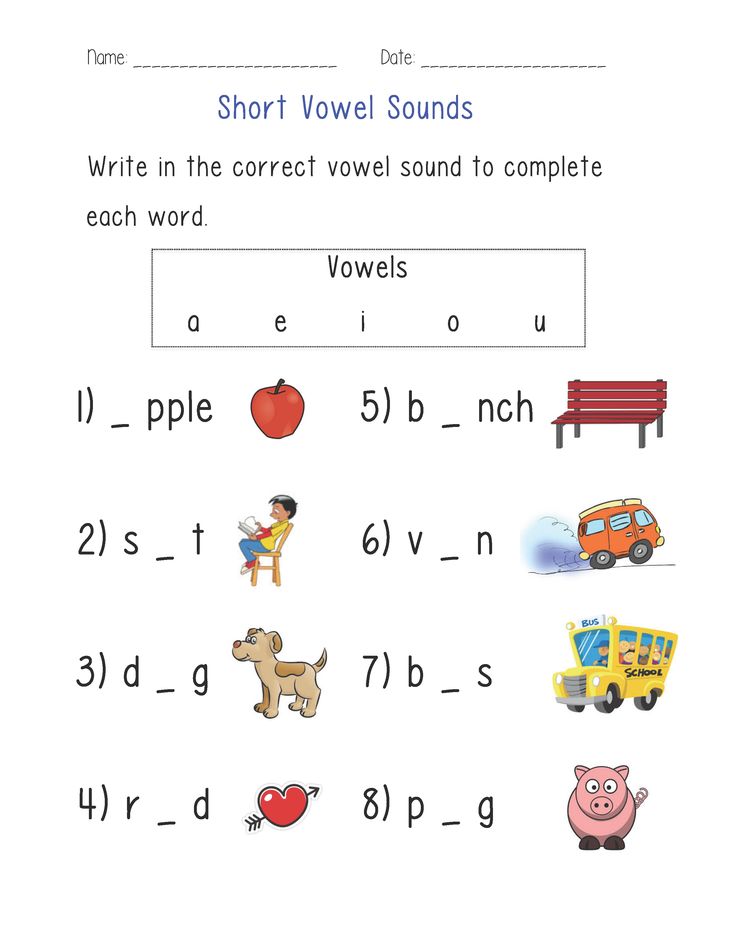 3.2, W.4.2, W.5.2, W.5.2a, W.5.2b…
3.2, W.4.2, W.5.2, W.5.2a, W.5.2b…
by
Briana Beverly
Place Value Math Craft for Second GradeWrap up your place value unit with this fun place value craftivity! This printable and digital donut craft is a great review of number forms, and makes a fun bulletin board display. Students will love using base ten blocks to create the sprinkles on their donuts. There are differentiated response sheets and challenge cards for your students who need the extra enrichment. This works for both 2-digit, 3-digit, and 4-digit numbers.This includes a printable ver
Subjects:
Place Value
Grades:
1st - 3rd
Types:
Activities, Printables
CCSS:
1.NBT.B.2, 2.NBT.A.1, 2.NBT.A.3, 3.NBT.A.1
Also included in: Place Value Activities Bundle
by
Shelly Rees
Interactive Notebooks are a wonderful tool for providing hands-on experiences for learners. This Maps, Continents, and Landforms Interactive Notebook is no exception! The packet is easy to use for both student and teacher. ✅ Click HERE to SAVE 20% on this resource with the Maps, Continents, and Landforms unit and poster bundle!✅ Click HERE to SAVE even more by buying ALL 15 Social Studies Interactive Notebooks and Mini Units in one Year-Long Bundle.Click on the PREVIEW button above to see all t
✅ Click HERE to SAVE 20% on this resource with the Maps, Continents, and Landforms unit and poster bundle!✅ Click HERE to SAVE even more by buying ALL 15 Social Studies Interactive Notebooks and Mini Units in one Year-Long Bundle.Click on the PREVIEW button above to see all t
Subjects:
Geography, Other (Social Studies - History), Social Studies - History
Grades:
3rd - 5th
Types:
Independent Work Packet, Printables, Worksheets
Also included in: 5th Grade Social Studies Activities and Interactive Notebook Bundle 4th Grade
by
MagiCore
⭐️Over 11,000 teachers trust this main idea reading comprehension passages and questions unit for 2nd & 3rd grade in their classrooms, and you're going to love it too. The included Lexile® leveled close reading passages, question sets, assessments, and anchor charts are perfect for teaching students how to identify the main idea and supporting details in a text. Texts, anchor charts, questions, and assessments are aligned to RI.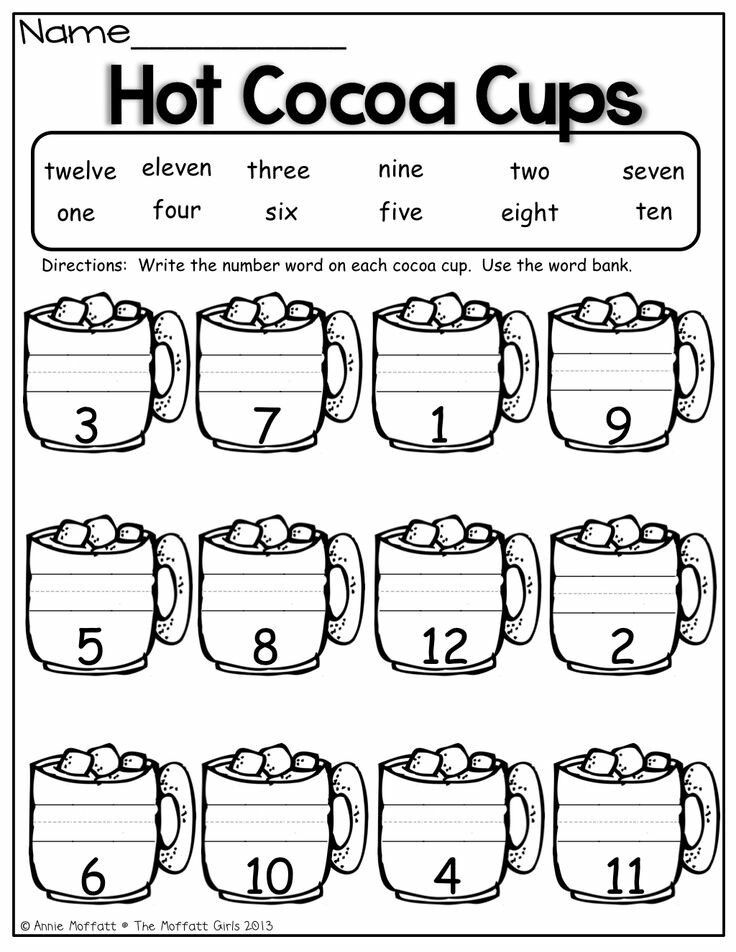 2.2 & RI.3.2 and focus on developing core main idea skills.
2.2 & RI.3.2 and focus on developing core main idea skills.
Subjects:
Close Reading, English Language Arts, Informational Text
Grades:
2nd - 3rd
Types:
Printables, Worksheets
CCSS:
RI.2.2, RI.3.2
Also included in: 2nd & 3rd Grade Nonfiction Comprehension Bundle - Google Distance Learning
by
My Teaching Pal
$12.00
$8.00
Bundle
The HUGE bundle of sentence work worksheets will have your students practicing a number of literacy skills related to fluency, editing, writing and grammar. This bundle is perfect for literacy centers, whole-class activities, homework, intervention programs and more!The following 4 packets are included in this bundle:1. Sentence ScrambleStudents unscramble the sentences to form a simple sentence. This activity is great for learning and understanding basic sentence structure. There are 20 pages i
Subjects:
English Language Arts, Phonics, Writing
Grades:
PreK - 1st
Types:
Activities, Centers, Worksheets
by
Ashleigh
These multiplication fact booklets can be used to help students understand the concept of multiplication, as well as memorize multiplication facts.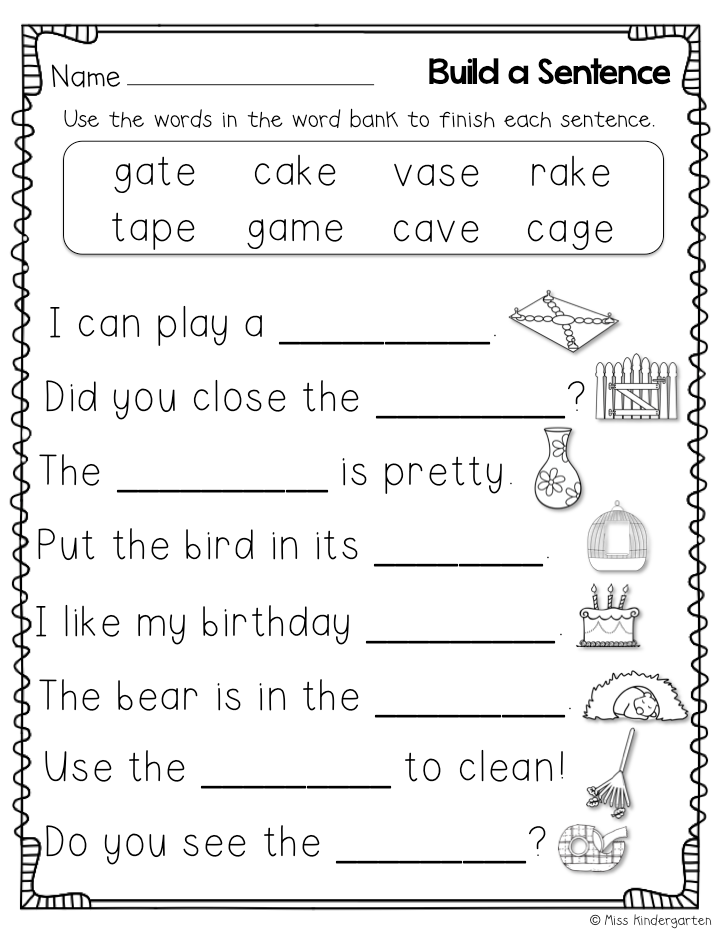 Plus, they can be used with distance learning, as there is a digital version in addition to the PDF version! There are eleven total booklets (2 facts-12 facts) that are each eight pages long. At the end of each booklet, there are two pages that can be cut out and used as flashcards. On each page students will:represent the multiplication expression
Plus, they can be used with distance learning, as there is a digital version in addition to the PDF version! There are eleven total booklets (2 facts-12 facts) that are each eight pages long. At the end of each booklet, there are two pages that can be cut out and used as flashcards. On each page students will:represent the multiplication expression
Subjects:
Algebra, Basic Operations
Grades:
2nd - 4th
Types:
Activities, Printables
CCSS:
3.OA.A.1, 3.OA.C.7
Also included in: Multiplication Facts Bundle
by
A Teachable Teacher
$25.00
$20.00
Bundle
All-in-One Reading Passages give your students the opportunity to practice phonics and fluency with these reading comprehension passages and questions. The best part? It requires no prep on your end! Now including original PDF + NEW digital versions of each phonics reading passage for distance learning!Each reading passage gives your students the opportunity to practice a targeted phonics skill in the context of reading. Each phonics passage also builds fluency and comprehension. It’s the bundle
Each phonics passage also builds fluency and comprehension. It’s the bundle
Subjects:
ELA Test Prep, Phonics, Reading
Grades:
1st - 2nd
Types:
English (UK), Guided Reading Books, Printables
by
Anne Gardner's Reading Resources
These sight word sentences, fluency passages and reading comprehension games for Guided Reading Levels A and B are designed to help students build confidence with early literacy skills. A high level of support is provided. Just one sight word is added on each page.This resource is fully aligned with the Science of Reading and is ideal for use in kindergarten and also toward the beginning of first grade. This Resource Includes:★ A full color set of Sight Word Sentences★ An ink-saving black and wh
Subjects:
English Language Arts, Reading, Special Education
Grades:
PreK - 1st
Types:
Centers, Independent Work Packet, Printables
CCSS:
RL. K.10, RL.1.10, RF.K.1, RF.K.1a, RF.K.3c…
K.10, RL.1.10, RF.K.1, RF.K.1a, RF.K.3c…
Also included in: Decodable Readers with Kindergarten Text, CVC Phonics & Sight Word Games {RTI}
by
Games 4 Learning
This collection of printable games contains 35 games that review multiplication up to 12 x 12. They are a fun way to help students develop fact fluency. These are PRINT and PLAY games. They require NO PREP. Just print and hand out.Each game requires a different multiplication skill. They are designed to make students apply their facts and also to make them think. PRACTICE THEN PLAY:Each game in this set now has a matching activity in NO PREP Multiplication Activities.This collection of multiplic
Subjects:
Basic Operations, Math, Mental Math
Grades:
2nd - 4th
Types:
Centers, Games
CCSS:
3.OA.C.7
Also included in: Multiplication Worksheets, Games & Activities Bundle Multiplication Fact Fluency
Outline of the lesson on the topic: "Vowels and consonants and letters"
Grade: 2
Topic: Vowels and consonants sounds and letters.
Type Lesson:
Lesson generalization and systematization of knowledge.
Main didactic goal of the lesson:
Summarize knowledge of vowels and consonants, bring them into the system
Objectives :
1. Educational :
- generalize students' knowledge about the role of vowels and consonants in the language;
- continue forming the ability to distinguish vowels and consonants sounds and letters and give them a description;
- update knowledge students about the work of vowels and consonants;
- provide application learners knowledge in practice.
2. Educators :
- arouse interest in learning the Russian language as a science;
- create conditions for interested work in the lesson;
3. Educational :
- promote expansion outlook;
- develop speech;
Equipment to lesson : notebook and other stationery, computer, tape letters.
Lesson progress:
1) Organizational stage : (readiness check to the lesson, correct posture).
-C gladly came to study you today?
- What does every student need to become a good student?
Remember, the one who works hard, he will achieve something. “Study and work will grind everything”
-How do you understand the meaning of this proverb? There is another proverb which will help us today in the lesson: "Repetition is the mother of learning"
topics and objectives of the lesson &
Today we will go on an exciting journey through the Land of vowels and consonants sounds and letters, where you will remember the vowels and consonants, what they are for needed and what functions they perform.
Finger gymnastics .
A now we must do a good warm-up in order to do it beautifully and correctly notebook entries
- start the engine of the car
(rotation fists)
- show how our heart works
(squeezing and unclenching hands)
- rise up the stairs and down
(large with a finger, press on the pads of the fingers in order)
- one, two, three, four, five, (fingers are bent in order into a fist)
and immediately:
all fingers went to sleep. (tilt cams)
(tilt cams)
- all of a sudden wake up, stretch.
Warm up did just great. Now our fingers and hands will be good assistants.
3) Update knowledge:
1) Minute calligraphy.
- Open notebooks and write down the date and “Classwork”
- What letter do you most want to write now?
- Describe this letter and its sound?
- Write in the notebook capital and lowercase side by side. Continue in this way until end of line. Choose the most beautiful letters and underline.
- Well done!
4) Generalization and systematization of knowledge
a) - A now I open the ribbon of letters. Let's take a closer look at it.
- Why are some letters highlighted in red and others in blue? - vowels, blue - consonants). Why did 2 letters remain gray with us? (This is b and b hnak.they have no sound)
- What do you know about vowel sounds? (vowels are sung)
- How many are there in Russian? (6) And how many vowels? (10)
- Let's remember how to pronounce vowel sounds (a, o, u, i, s, e)
- How are sounds written in writing? (in square brackets)
- Name the letters of the vowels that indicate hardness consonant sound (a, o, y, s, e)
- What are the letters of vowels that indicate the softness of the consonant sound (i, e, e, i, j)
- Which of these letters can represent two sounds? (I, yo, e, yu) (I-ya, Yo-yo, E-ye, Yu-yu)
- When do they represent two sounds? (at the beginning of a word, after vowels, before ъ and ь signs)
- Let's give examples of such words.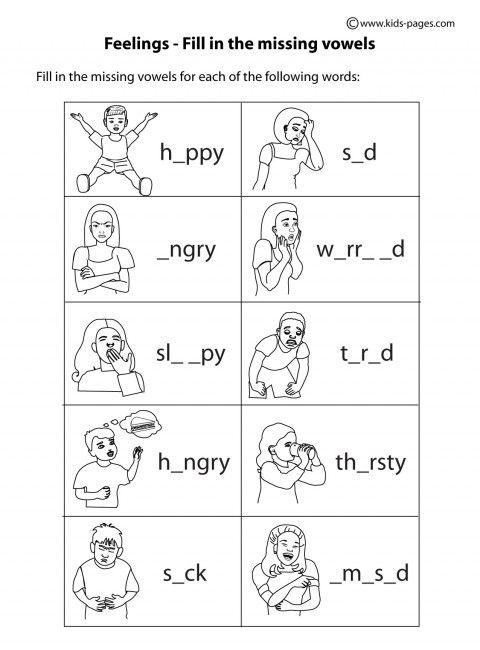
For example, clear, singing, pouring, entrance.
- Can a syllable consist of only one vowel sound? (yes)
- Can a syllable be made without vowels? (no)
- Let's conclude, for this the necessary vowels?
(vowels sounds are needed to form a syllable.)
-Try parse the words that we cited earlier, by syllables. - 2 syllables each, and in the word pours - one syllable)
Remember how many vowels in a word, so many syllables!
b) Gymnastics for the eyes.
Not turning heads (head straight), with eyes closed, look to the right at count 1-4, then left to count 1-4 and straight ahead to count 1-6. Raise your eyes up to count 1-4, drop down to count 1-4 and look straight at count 1-6. Repeat 4-5 times.
c) On screen sounds: [g], [r], [m], [c], [y], [f].
-What extra sound? [y] Why? (vowel, and the rest are consonants)
-And you Do you know poems about consonants?
Then I will read to you now, and you repeat after me:
A consonants agree
Rustle, whisper, creak,
Even snort and hiss,
But not they want to sing.
Ccc - serpentine whistling is heard,
Shhsh - the rustle of a fallen leaf.
Zhzhzh - bumblebees in the garden are buzzing,
Prr - motors rumble.
d)-as consonant sounds?
- What can you say about the consonant sound? (it consists of voice and noise or only from noise)
What Do letters represent consonants? (b, c, d, e, g, h, d, k, l, m, n, p, r, s, t, f, x, c, h, w, w)
- On what groups are consonant sounds divided into? (into soft and hard, into deaf and voiced, into paired and unpaired)
Than is softness indicated in the letter of a consonant sound? (indicated by vowels e, e, u, i, i, as well as a soft sign)
- I I’ll give you such words for comparison - onion-hatch, chalk-stranded. Where soft consonants, but where are the hard ones, tell me?
- A now we will switch to paired consonants.
name couples for me! (b-p, v-f, g-k, d-t, w-w, s-s - hard and equally soft)
- The rest of the consonants were left without a pair.
- Name the letters of unpaired voiced consonants (l, m, n, p, d)
- What can you say about the letters ha, tse, che, shcha? (letters of unpaired deaf consonants sounds)
- Name the letters of always soft consonant sounds. (j, h, w)
- Name the letters of always solid consonants. (w, w, c)
- I once again, how is it different from all other letters b and b? (they are not denote sound)
- And finally, can a consonant sound form a syllable without a vowel? (No, a syllable formed only together with a vowel sound)
Well done! You have successfully passed the test for knowledge of vowel sounds!
e) Physical education minute.
times, two, three, four, five
Started hare jump,
jump hare is much,
he jumped ten times.
5) Application knowledge and skills in a new situation
a) A Now let's practice a little in applying our knowledge.
- The letters on the screen are: Z, K, A, C, E, H, M, I, Yu, B.
these letters are in 2 groups.
- On what basis did you separate the letters? (vowels and consonants)
Name letters in each row. Complete each row with your examples of two letters.
Pick up words that begin with letters representing consonants. And now, vowels.
b) Guess the riddles and we will make a sound analysis of the riddle words.
A horse is racing across the sky -
Fire flies from under your feet.
The horse beats with its mighty hoof
And splits the clouds.
So hard he runs,
That the earth trembles below. (storm).
I am shaggy, I am shaggy,
In winter I am above every hut,
Above the fire and the factory,
Above the fire and the steamer.
But nowhere - nowhere me
There is no fire without fire. (smoke)
Escapes like a living thing,
But I won't let him out.
The matter is quite clear:
Let him wash my hands. (soap).
(soap).
6) Control assimilation, discussion of the mistakes made and their correction
- What was studied and repeated on lesson?
-Can you tell the difference between letters and sounds?
- Is the statement "The number of syllables determined by the number of vowels in a word?
I rate you for the lesson 5(4, 3..)
7) Information about homework
Repeat all the vowels and consonants and letters.
Write out the last riddle 5 words and do sound analysis.
8) Reflection.
- What do you like most did you like the lesson?
- Continue saying:
I liked it...
I did it...
It was difficult for me... "Vowels and Letters" | Outline of the Russian language lesson (Grade 1) on the topic:
Synopsis of the Russian language lesson in the 1st grade. "Vowels and Letters"
Teacher MBOU NOSH Pokrov O.V.
Topic: vowel sounds and letters
Purpose: To consolidate the ability to identify vowel sounds and letters. Recall the main features of vowel sounds
Recall the main features of vowel sounds
Universal learning activities:
Personal: developing a positive attitude towards learning and one’s knowledge, developing creative imagination.
Regulatory: organization by students of their learning activities: goal setting, planning; control and self-control of the process and results of educational activities.
Cognitive: the ability to analyze, compare, find the answer to a problematic question.
Communicative: the ability to listen and engage in dialogue, participate in a collective discussion of problems; provide mutual assistance.
Tasks:
Educational:
- To consolidate the concepts of vowel sounds and letters;
- Learn to distinguish a vowel sound in a word;
- Learn to distinguish between sounds and letters;
Educational:
- develop the thinking of schoolchildren through analysis, generalization, reasoning;
- to continue work on the development of speech, memory, attention;
- develop the ability to use the knowledge acquired earlier;
- develop phonemic hearing on the material of sounds [a], [y], [and]; [e], [s] [o];
Educational:
- Strengthen the ability to listen to each other
- Maintain an interest in birds and a caring attitude towards them
Type of lesson: actualization of knowledge and skills (repetition lesson)
Teaching methods:
- Verbal methods (generalizing conversation, introductory conversation, instructions for assignments).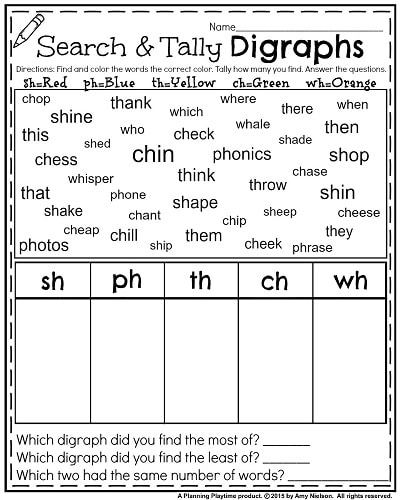
- Visual methods (working with a PC, letters on magnets, cards, ).
- Practical methods (work with a textbook, independent work, performing various exercises, demonstration of experience).
Techniques for enhancing cognitive activity were used: (asking questions; comparing letters and sounds; searching for suitable vowels, copying from printed text, etc.).
Forms of work: frontal, individual, static pairs.
Used technologies: information and communication, health-saving, system-activity approach.
Equipment: computer, multimedia projector, scanned textbook pages on the blackboard, netbooks on each desk, individual whiteboards, marker. Russian language textbook by V.P.Kanakin, notebook,
I. Organizational stage.
Purpose.
Inclusion of children in activities at a personally significant level. Organizes pronunciation of the rules of conduct in the lesson.
Guys, we have a Russian lesson
look at your desk. (Textbook, / workbook / Russian language notebook / blue and green pen / ruler)
(Textbook, / workbook / Russian language notebook / blue and green pen / ruler)
- Let's greet our guests,
- Sit down.
The bell rang loudly.
The lesson starts.
We listen, remember,
We don't waste a minute.
II. Updating knowledge
II. Actualization of knowledge
Didactic game, actualization of knowledge about sounds and letters studied earlier.
Front. Verbal.
Let's review what we already know about letters and sounds. To do this, I suggest you play the game "YES-NO". I will ask questions. And if you want to answer “yes”, then raise both hands up, if “no”, then do not change the position of the hands.
- Is it true that the letters a, o, y, s denote vowel sounds?
- Is it true that the letters b, c, d, e - denote deaf consonants?
- Is it true that the letters i, i, e - denote solid consonants?
- Is it true that the sound [h] is always soft?
- Is it true that ь is a vowel representing a soft consonant?
- Is it true that we pronounce and hear letters, but we see and write sounds?
- Is it true that we know that two vowels that appear at the beginning of a word and after a vowel represent 2 sounds?
Remembers the rules of seating when writing, the rules of the position of the notebook.
Gives a task to students, organizes a check.
-Open your notebooks, get ready to write.
Sit up straight, put the notebooks correctly
-Write down today's date. Classwork.
We have a calligraphy minute.
A a D d I and R r - underline the vowels
Analysis of the word water lily on the interactive whiteboard, write this word in a notebook, underline all the vowels, circle the rule -shi-
- underline the vowels. Parse a few words on computers.
III. Statement of the educational task.
Purpose.
Formulation of the topic of the lesson.
Creates a problem situation.
Leads students to the formation of the purpose of the lesson.
u y m a y o y o e e i (LETTERS on the blackboard)
- What do you see on the blackboard? (letters)
- find the extra letter (s), (m)
- what can you say about the remaining letters?
- What do you think we will talk about today at the lesson?
- (Answers)
- Yes, guys, the topic of our lesson today is "VOUCHERS AND SOUNDS". And today in the lesson we will remember and repeat everything we already know about Vowels and Sounds. Let's remember what role vowels play in words and how to determine Ch. letters and sounds.
And today in the lesson we will remember and repeat everything we already know about Vowels and Sounds. Let's remember what role vowels play in words and how to determine Ch. letters and sounds.
- How many vowels? (-10)
- Vowel sounds? (6)
Talk about why.
Which vowels cannot be called sounds. Remember when these letters represent 2 sounds.
IV. Application of knowledge and skills in a new situation
2. Work on the interactive board. Think of a new word by changing one vowel. Writing words in a notebook.
Circle the letters that have changed
Why are these sounds called vowels? read a poem about vowels and accord. sounds)
- What does a vowel sound consist of? (out of voice)
- Let's open the textbook on page 58
- Student reads
- (teacher reads) show the letter on the board, say
- continue the sentence:
- letters we ... (see, write, call .)
- sounds we . .. (hear and pronounce)
.. (hear and pronounce)
- divide the word into syllables LSTCHK
(The word is not divided, because there are no vowels. Which denote vowel sounds.)
- We conclude:
- What role does Ch. sound? If there are no answers, then a leading question: What forms Ch. sound? (A vowel forms a syllable)
- How many syllables can a word have? (answer)
- Let's write the word correctly.
Underline ch. letters and divide into syllables. (Student at the blackboard)
- how many vowels are in the word SWALLOW (3)
- how many syllables? (How many vowels, so many syllables)
Be able to formulate your thoughts orally, listen and understand the speech of others (Communicative UUD).
Be able to navigate in your system of knowledge; to analyze objects (Cognitive UUD).
Be able to summarize the information received, draw a conclusion (Cognitive UUD).
Be able to formulate your thoughts in writing (Communicative UUD).
PHYSMINUTKA
V. Generalization and systematization of knowledge
Purpose.
Strengthen the ability to explain the meaning of what is read and identify unstressed vowels
work on sentence
Organizes work with the replacement of vowels in words.
- Guys, read the sentence to yourself (projector)
"A bird is red with a pen, and a man with a mind."
(the second time the student reads aloud)
- How do you understand the meaning of the proverb? (answers)
- (people Well-read, smart.)
What does well-read mean? (answers)
- Which one of you reads a lot? Raise a hand…. Well done.
- Write down the sentence……
- Put the stress on the words. (a student works on the board).
- What are the vowels? (stressed and unstressed)
- Emphasize unstressed vowels.
a task for smart people and smart girls.
Distribute syllables in pairs on computers: soft consonants - hard consonants. Make a conclusion which vowels soften the consonants. (LETTER F)
Make a conclusion which vowels soften the consonants. (LETTER F)
Be able to navigate in your system of knowledge; to analyze objects (Cognitive UUD).
Be able to summarize the information received, draw a conclusion (Cognitive UUD).
VI. Independent work with self-test
Copying a sentence with a task.
Card
Soon starlings and rooks will arrive from warm countries.
Stress and emphasize unstressed vowels in the word: ARRIVAL
(Cognitive UUD).
Be able to perform a self-test.
(Regulatory UUD).
VIII. Reflection (summing up)
Purpose.
Fixing knowledge and skills
Students' awareness of their learning activities, self-assessment of the results of their own and the whole class's activities.
Organizes fixing of content.
Organizes reflection.
Organizes self-assessment of educational activities.
- Guys, at the beginning of the lesson we had two questions, namely: how to identify vowels and sounds; what is the role and main features of vowels)
-Do you think we got an answer to them? (Yes)
Gl.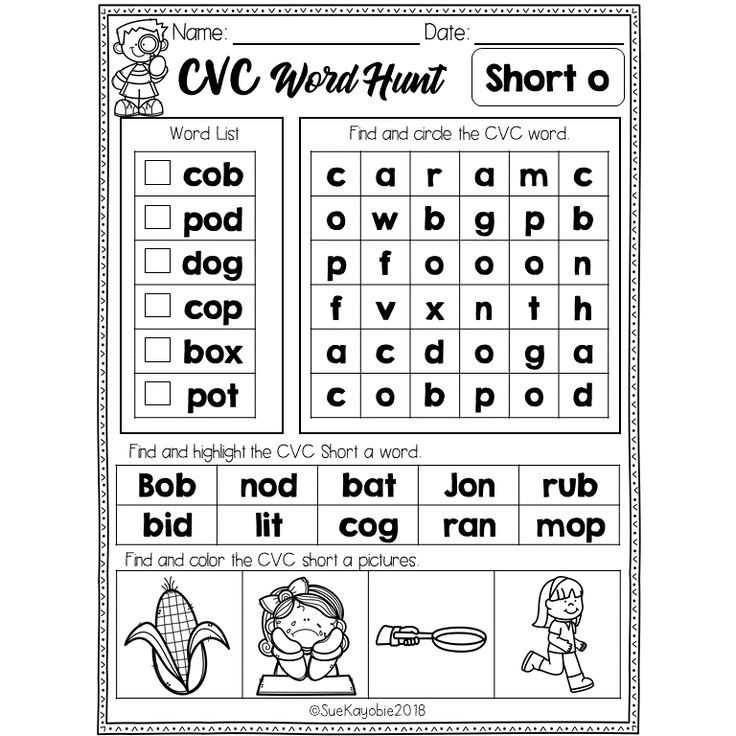 – we see, we write, we call,
– we see, we write, we call,
Main sound. - hear and speak.
Vowels form a syllable, are stressed and unstressed
- Rate your work (using emoticons) -
Our lesson is over. Thank you for your work.
Guys, turn to the guests, smile and show a smiley.
Be able to formulate your thoughts orally (Communicative UUD).
Be able to evaluate the correctness of the performance of an action on (Regulatory UUD).
Analysis
Organizational and motivational component: reading a poem
Actualization of existing experience through the YES-NO game. I used individual boards that show the knowledge of each child.
Goal-setting through the use of an electronic supplement to the textbook "Russian alphabet" by V. G. Goretsky. The students themselves came up with the task of the lesson - Our task is to explore vowel sounds and learn as much as possible about it.
An electronic application was also used in the reflection phase.





